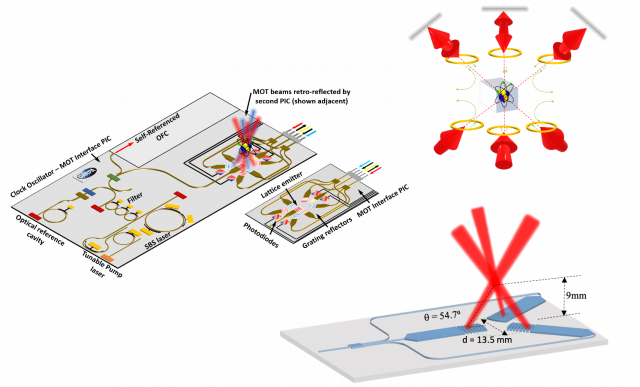Photonic integrated cold atom systems

Optical atomic clocks based on spectroscopy of atomic vapors can measure physical quantities such as electric and magnetic fields, time, and rotation and have a broad range of applications including quantum sensors, quantum optical communications, high precision gyroscope and high precision navigation. Laboratory optical atomic clocks with remarkable accuracy (now down to 10-18) creates opportunities of both exploring fundamental physics and making high precision applications but their huge size prevent them from being more widely adopted in applications that require precision timing.
By leveraging on-chip photonics integration technologies to reduce component size and complexity, such as the sub-Hz linewidth stimulated Brillouin scattering (SBS) laser [1], ultra-low-loss SiN waveguide (link to it), self-referenced optical frequency comb, and on-chip 3D magneto-optical trapping (MOT) and cooling, we are able to build an extremely compact chip-scale (<1cm3) atomic clock. By trapping and cooling the Sr or Rb atom vapor and interrogating cold atoms with a reference laser, the optical frequency of the laser can be stabilized down to 10-13 ~ 10-14.
We have developed an extremely large-area-grating mode converter on a SiN-based PIC to convert the waveguide mode to a non-diverging 3.8mm×2.02mm free-space beam for cooling the atoms in the MOT, which achieves an increase of 18×106 in the mode area [2].
